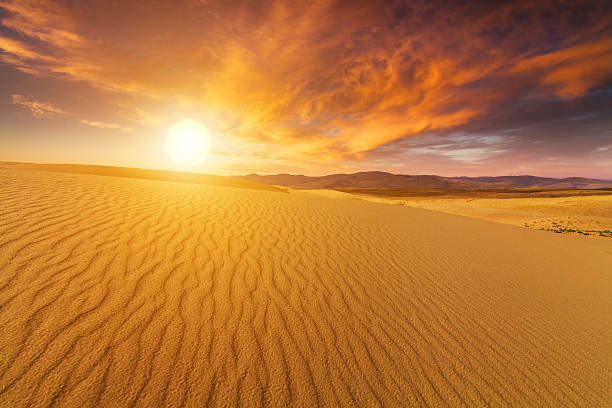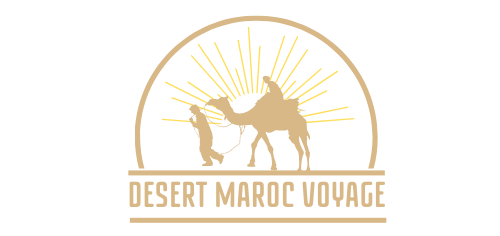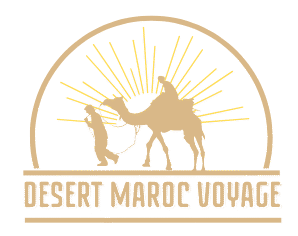Camel trekking has been a big part of Moroccan culture for centuries. It’s a special way to see the country’s vast deserts and mountains. The tradition of riding on camelback has been kept alive for generations. Camels are seen as symbols of strength and ability to adapt.

Camel trekking means more than just traveling in Morocco. It connects us to the country’s deep history and traditions. As the world gets smaller, knowing about this old practice is more vital than ever.
Key Takeaways
- The historical significance of camel trekkingin Moroccan culture.
- The role of camel trekking in shaping Moroccan identity.
- The impact of modernization on traditional camel trekking practices.
- The importance of preserving cultural heritage.
- The benefits of experiencing camel trekking in Morocco.
The Historical Significance of Camels in Morocco
For centuries, camels have been key to Moroccan culture. They’ve played a big role in the country’s history. Camels are seen in many parts of Moroccan life, like trade, commerce, and traditions.
Ancient Trade Routes and the Saharan Highway
Camels helped make Morocco important in ancient trade routes, like the Saharan Highway. This route connected West Africa to the Mediterranean. It was not just for goods but also for sharing ideas and cultures. The camel’s ability to travel long distances in harsh deserts made it perfect for this job.
Nomadic Berber Traditions and Camel Husbandry
The Berber people, who live in Morocco, have always cared for camels. They know a lot about breeding and taking care of them. This knowledge has been passed down for many years. Camel milk, meat, and wool were important in the Berber diet and economy.
The Camel’s Role in Moroccan Cultural Identity
The camel is very important in Moroccan culture. It stands for strength, resilience, and hospitality. Today, camel trekking is a way for tourists to see the desert and Berber culture. The table below shows how camels have helped Moroccan society.
| Aspect of Moroccan Society | Camel’s Role |
|---|---|
| Trade and Commerce | Transportation across the Sahara, facilitating trade between West Africa and the Mediterranean |
| Berber Traditions | Husbandry, milk, meat, wool, and cultural practices |
| Cultural Identity | Symbol of resilience, strength, and hospitality; integral to camel trekking tourism |
Understanding Modern Camel Trekking in Morocco
Modern camel trekking in Morocco has changed a lot. It’s now a big tourist attraction, not just a way to travel. This change affects the desert views and local communities.
From Necessity to Tourism: The Transformation
Camels were once key for crossing the desert. But with cars, they were less needed. Now, they’re a hit with tourists wanting a real desert adventure. Tour operators now offer guided treks for short or long Sahara trips.
Cultural Exchange Through Desert Journeys
Camel treks let visitors and locals share cultures. Travelers learn about the Berber people’s traditions, music, and food. Desert camps are key for this, as they offer chances to meet local guides and hosts.
Preserving Traditional Knowledge and Practices
Despite changes, Morocco works hard to keep camel trekking traditions alive. Guides teach young people how to care for camels and survive in the desert. They also work to save the Berber culture. Here’s a look at what’s being kept alive:
| Traditional Practice | Description | Significance |
|---|---|---|
| Camel Husbandry | Care and breeding of camels | Essential for trekking and local economy |
| Desert Navigation | Skills to navigate desert landscapes | Crucial for safe trekking |
| Traditional Medicine | Use of local herbs and remedies | Important for health and well-being |
Morocco keeps its culture alive through modern camel trekking. It gives visitors a special experience and keeps its traditions strong.
How to Prepare for Your Moroccan Camel Trek
Getting ready for a camel trek in Morocco is key. It’s about the right gear and knowing the local culture. Being prepared makes your trip better, safer, and more comfortable.
Essential Gear and Clothing Recommendations
Choosing the right clothes and gear is important. The desert sun is strong, and the weather can change.
Desert-Appropriate Attire
Wear lightweight, breathable clothes that cover you. A scarf or bandana helps protect your face and neck from the sun and sand.
Personal Comfort Items
Bring personal comfort items like a good sleeping bag and a water bottle. Also, remember a first-aid kit.
Physical Preparation and Fitness Considerations
Camel trekking is hard work. You need to be fit. Start a training regimen a few weeks before. Focus on heart health and building stamina.
Cultural Etiquette and Respectful Behavior
Respecting local culture is important. Learn about Moroccan customs to have a good time and show respect.
By paying attention to these tips, you’ll have a great time on your Moroccan camel trek.
The Art of Camel Trekking: Techniques and Safety
Camel trekking is more than just riding. It’s about knowing how camels behave, following safety rules, and talking to your camel and guide. Learning these skills will make your trip to Morocco unforgettable.
Mounting and Dismounting Safely
Getting on and off a camel needs care. Always move calmly and listen to your guide. Make sure the camel is steady before you get on, and hold the reins tight. When you get off, wait for the camel to sit or for your guide to hold it.
Key steps for safe mounting and dismounting:
- Approach the camel calmly
- Follow guide instructions
- Mount on stable ground
- Hold reins firmly
Riding Posture and Comfort Strategies
It’s important to ride comfortably. Sit up straight and spread your weight evenly. If there are stirrups, keep your feet in them and hold the reins lightly. Adjust your seat as needed to stay comfy.
| Riding Posture Tip | Benefit |
|---|---|
| Sit upright with back straight | Reduces strain on back and improves balance |
| Distribute weight evenly | Enhances stability and comfort |
| Keep feet in stirrups | Provides additional support and balance |
Communicating with Your Camel and Guide
Talking to your camel and guide is key for a good trip. Learn the basic commands and signals your guide uses. Also, pay attention to your camel’s behavior and body language. For more on camel trekking, check out Erg Chebbi in Merzouga.
“The desert is a vast and mysterious place, full of wonders and dangers. Understanding and respecting your camel is key to a successful trek.” – Experienced Camel Trekker
By learning these skills and focusing on safety, you’ll enjoy the beauty and adventure of camel trekking in Morocco.
Top Destinations for Authentic Camel Trekking in Morocco
Morocco is a dream spot for camel trekking lovers. It has everything from the Sahara Desert to the coast. You can see vast dunes and rugged mountains.
The Majestic Sahara: Erg Chebbi and Erg Chigaga
The Sahara Desert is a top spot for camel trekking in Morocco. Erg Chebbi and Erg Chigaga are famous for their stunning views. They offer amazing experiences.
Merzouga Region Highlights
The Merzouga area near Erg Chebbi is famous for its beautiful sunrises and sunsets. You can go on camel treks, watch Berber shows, and enjoy the desert’s calm.
M’hamid and Southern Routes
M’hamid, near Erg Chigaga, is perfect for a quiet camel trek. The southern routes let you see traditional Berber life and vast deserts.
Coastal Treks: Essaouira and Atlantic Beaches
The coastal routes of Essaouira mix desert and sea. Camel treks along the Atlantic beaches are refreshing. You’ll hear the waves and feel the sea breeze.
Essaouira is known for its arts, seafood, and walls. Camel treks here show off Morocco’s coastal beauty.
Mountain Routes: Atlas Mountains and Beyond
The Atlas Mountains are great for camel trekking. They have rugged landscapes, Berber villages, and stunning views. Camel treks here let you see nature and culture.
Mountain routes are for the brave. They have steep paths and remote villages. You can see local life up close.
To learn more about camel trekking in Morocco, visit Native Scavan. They have info and can help you book your trip.
Planning Your Camel Trekking Itinerary
Planning a camel trekking adventure in Morocco is key to a great trip. A good itinerary can turn a good trip into an amazing one.
Day Trips vs. Multi-Day Expeditions
First, decide between a day trip or a multi-day expedition. Day trips are perfect for those short on time. They let you try camel trekking without a big commitment.
Multi-day expeditions offer a deeper dive into the desert. You’ll camp under the stars and enjoy the desert’s quiet. Think about your time, fitness, and what you want from your trip when choosing.
Seasonal Considerations and Best Times to Trek
The best time for your camel trek depends on the weather. Morocco’s desert has hot days and cool nights.
Weather Patterns and Climate Challenges
The best times are spring (March to May) and autumn (September to November). These months have milder temperatures. Summer is very hot, and winter can be chilly, mainly in the mornings and evenings.
Festival Seasons and Cultural Events
Morocco’s festivals add to your trek. Events like the Marrakech Popular Arts Festival and Essaouira Gnawa Music Festival offer cultural insights. But, they might draw crowds and raise prices.
Budgeting and Cost Expectations
Plan your budget for guides, equipment, food, and lodging. Prices change based on the trip length, season, and comfort level.
Here are some costs to consider:
- Guide services: Local guides add a lot to your experience.
- Equipment rental: This includes camels, saddles, and camping gear.
- Food and drink: Some tours include meals, while others require you to buy food.
- Accommodations: For longer trips, think about camping fees or lodge costs.
Remember to budget for souvenirs and unexpected costs. Knowing these costs helps plan your trip within your budget.
Experiencing Berber Hospitality During Your Trek
When you start a camel trek in Morocco, you’re not just seeing the desert. You’re diving into a world of warm Berber hospitality. The Berbers, known for their kindness, welcome trekkers to share their culture.
Traditional Meals and Dining Customs
Camel trekking in Morocco lets you try traditional Berber food. Local cooks make meals with old recipes and fresh ingredients. You’ll enjoy dishes like tagines, couscous, and fresh bread, all made with love.
Dining is a big part of Berber culture. Meals are shared, bringing guests and hosts together.
Traditional Berber Meal
| Dish | Description | Ingredients |
|---|---|---|
| Tagine | A slow-cooked stew named after the clay pot in which it’s cooked. | Meat, vegetables, dried fruits, spices |
| Couscous | A traditional North African dish made from semolina flour. | Semolina flour, water, vegetables, meat or fish |
| Msemen | A type of pancake that is square in shape and often served with honey or sugar. | Flour, water, salt, oil, honey or sugar |
Desert Camps and Overnight Accommodations
After trekking, desert camps offer a peaceful place to rest. These camps range from simple tents to eco-friendly lodges. The real magic of desert camping is the connection to nature and the stars.
Music, Storytelling, and Evening Entertainment
Evenings in the desert are lively with music, stories, and entertainment. Local musicians play traditional tunes, and guides share Berber legends. These moments are fun and help you understand Berber traditions.
Experiencing Berber hospitality on your camel trek is a journey into Moroccan culture. It’s a chance to connect with the land, people, and their heritage, making unforgettable memories.
Responsible and Sustainable Camel Trekking Practices
Camel trekking tourism is growing fast. It’s key to care for the environment and camels. As travelers, we must make sure our trips help the local ecosystem and people.
Animal Welfare Considerations
The care of camels is very important. Responsible camel trekking focuses on animal health and happiness. Look for operators that follow strict animal care rules.
Some important things to check include:
- Camels should be well-fed and have enough water.
- Camels should not carry too much weight.
- They need regular vet visits.
Environmental Impact and Conservation
Responsible camel trekking can be kind to the environment. Eco-friendly practices like reducing waste and using green energy are key. Treks should avoid harming sensitive areas.
Learn more about eco-friendly travel on our FAQs page.
| Best Practices | Environmental Benefits |
|---|---|
| Reducing plastic use | Less marine pollution |
| Using solar-powered equipment | Lower carbon emissions |
| Staying on designated trails | Preservation of natural habitats |
Supporting Local Communities Through Tourism
Supporting local economies is essential for camel trekking to thrive. Choose local guides, places to stay, and services. This helps the local community.
By following these steps, we can keep camel trekking good for both local communities and the environment.
Conclusion: Embracing the Timeless Journey
Camel trekking in Morocco is a mix of adventure, culture, and stunning views. It’s deeply connected to Moroccan history, from old trade paths to today’s tourism.
Travelers can see the Sahara’s beauty, meet local Berbers, and make unforgettable memories. Morocco’s varied landscapes, from the Atlas Mountains to Erg Chebbi’s dunes, are ready to be explored.
When planning your camel trek, respect local ways, care for animals, and choose eco-friendly tours. This way, you’ll enhance your trip and help keep Morocco’s culture alive.
Start your camel trekking adventure and uncover Morocco’s desert wonders and the kindness of its people.
FAQ
What is camel trekking, and how does it relate to Moroccan culture?
Camel trekking is a traditional way to travel and explore in Morocco. It’s deeply connected to the country’s history and culture. You ride camels across desert landscapes, guided by a local, to see the area’s natural beauty and cultural richness.
What are the best destinations for camel trekking in Morocco?
Morocco has many great places for camel trekking. You can explore the Sahara Desert, coastal areas like Essaouira, or the Atlas Mountains. Each spot offers a unique adventure, from the Sahara’s vast dunes to coastal views.
How do I prepare for a camel trekking adventure in Morocco?
To get ready for camel trekking, pack the right clothes and gear. Wear comfortable desert clothes, bring sun protection, and personal items. Also, think about your fitness level and how to respect local culture during the trek.
What are the key safety considerations for camel trekking?
Safety is very important when camel trekking. Make sure to mount and dismount safely, ride comfortably, and talk clearly with your camel and guide. Always follow your guide’s advice and take steps to stay safe and have fun.
How can I ensure that my camel trekking adventure is environmentally friendly and sustainable?
For a green camel trek, think about the environment, support local people, and care for animals. Choose tour operators that are eco-friendly and respect local ways. This helps keep the trek sustainable and enjoyable for everyone.
What can I expect in terms of accommodations and meals during a camel trek?
On a camel trek, you’ll stay in desert camps or Berber homes. These places offer a special cultural experience. Meals are traditional Berber food, using local ingredients. Expect simple but warm hospitality.
How do I plan a camel trekking itinerary that suits my needs?
Planning your camel trek involves several steps. Think about the trip length, best times to go, and your budget. Look for a trusted tour operator to create a trip that fits your wishes and abilities.

